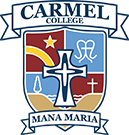Awhinatanga – Service
This week we celebrated one of our Core Mercy Values – Awhinatanga by recognising senior students who had completed their Service hours. Most Catholic schools and many state schools in NZ have service programmes and this is even more common in the United States where many States have a Community Service component to graduate High School. One such school is Mercy High School[1] in Baltimore. It is a Mercy School similar to Carmel College. Students at Mercy High School are required to complete 50 hours of community service in a school year. The service project undertaken in their final year of High School also requires:
- a presentation to display the work undertaken
- a written reflection on the personal learnings gained from doing the project
- a presentation that includes an evaluation of the service experience
The following statement from the school website shows the intent of this service.
“In the spirit of the Sisters of Mercy and in the footsteps of Jesus Christ, students are given the opportunity to experience service-learning by sharing their time, talent and treasure with our neighbors in need. This call to engage in direct service is about being with people whose lives are likely very different from one’s own life. Direct service requires building face-to-face relationships, and breaking down the barrier between the giver and the receiver. While direct service will likely also include some element of doing something for another, this type of service is typically focused on conversation and building companionship. While this may seem intimidating to some, this direct, relational service often breaks down stereotypes and widens circles of compassion. These experiences will likely stretch students out of their comfort zones, and help form them as courageous leaders in our society”.
Hopefully the service that was recognised at assembly on Wednesday has “stretched and challenged” Carmel students and that it is just the beginning of a lifetime of service and leadership.
Philippians 2:3-4 (NIV) urges us to do nothing out of selfish ambition or vain conceit. Rather, in humility to value others above ourselves, not looking to our own interests but to the interests of the others – in other words, to be a “servant leader”. The phrase “servant leadership” was first used by Robert Greenleaf in 1970. Greenleaf[2]described a servant-leader as one who focuses primarily on the growth and well-being of people and the communities to which they belong. That is, they make sure that other people’s needs are being served through their leadership.
By being a ‘servant leader,’ seeing the need and making a difference and by giving generously of our time we make Awhinatanga – Service an integral dimension of how we live out the Gospel in our daily lives. It is a work of Mercy – mahi atawhai.
Heoi anō tāku mō nāianei.
That is all for now.

